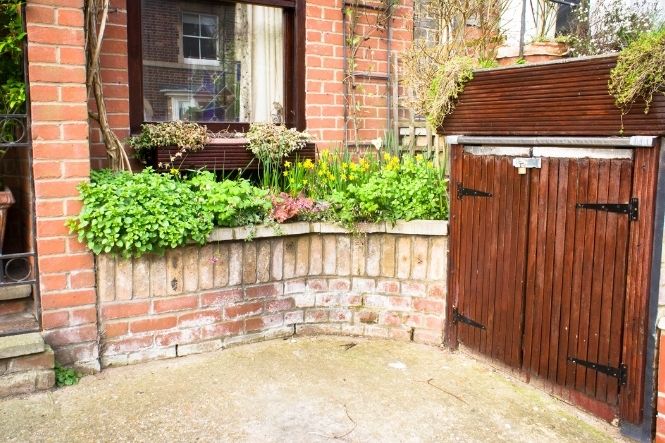Living in a classic suburban street in Greater London, Mr and Mrs Jardine felt, just like almost every other person in the street, that their car would be more secure if it was parked off-road. It would also mean that they would have a chance of actually parking close to their front door, something that they hadn’t been able to do easily for the last 20 years.
Street Parking Psychology
“We’re not like some people in the street, territorial about the piece of pavement outside our house,” Mrs Jardine explained, “but as we’re getting older it’s harder to carry the shopping a long way, and we can hardly ever find a parking place nearby.”
So they decided to replace the small patch of lawn in front of their house with a hardstanding for a car. But it was talking to a neighbour’s two young children that made them consider the ecological implications. Mr Jardine took up the story.
Out of the Mouths of Babes
“There are twin girls next door who are in their second or third year at the comprehensive. They were asking about things that people did that caused an environmental impact for a project at school. They asked us because we’ve known them since they were born, and we told them that we didn’t really think we were the right people to talk to.”
“I was struggling a bit for anything to say, to be honest, but when I mentioned about concreting over the front garden their little eyes lit up straight away,” said Mr Jardine.
Mrs Jardine laughed. “They were off!” she said, “full of all sorts of things, like removing the microhabitat and making floods worse and all sorts. I couldn’t understand a word!”
School Project
The children decided to use the Jardines as an ecological project, and produced a big poster that covered all the different impacts of removing the gardens from the front of homes. The Jardines began to wonder if there was something in it after all, but just by chance the following week there were four days of torrential rain.
“We could actually see it,” said Mr Jardine. “I was walking up to where we had parked the car and the water was running down the pavement past me until it hit a stretch near us where there’s three gardens in a row. You could really see the water slowing and being absorbed, because there was much less running down the pavement on the other side of them.”
Finding a Permeable Alternative
But that was only half the story. The Jardines then had to find something that would allow them to park their car in their garden but still let the plants grow, and at first they weren’t sure where to start.
“I knew it was pointless just driving onto the grass,” said Mr Jardine. “It would just be a quagmire in a couple of months. But fortunately we’re members of the RHS (Royal Horticultural Society) and they had a leaflet that explained what the problem was and gave us a few ideas.”
The Jardines plumped for permeable block paving, which actually worked out cheaper than concreting the front garden anyway. It’s been down for just over a year, and as the Jardine seeded the cells with a mixture of grass seeds, the pale grey blocks are now almost hidden.
Planning Law Changes
The Jardines would not be able to use concrete now in any case. In October 2008, the law changed to require anyone creating a hardstanding of more than five square metres to use a permeable substance or they will have to apply for Planning Permission.
“I thought we were perhaps being a bit silly at first,” said Mrs Jardine, “and lots of our friends said we should just concrete it over and be done with it. But now that the government have changed the law to make other people do what we did it doesn’t seem so odd. I’m quite pleased really.”

